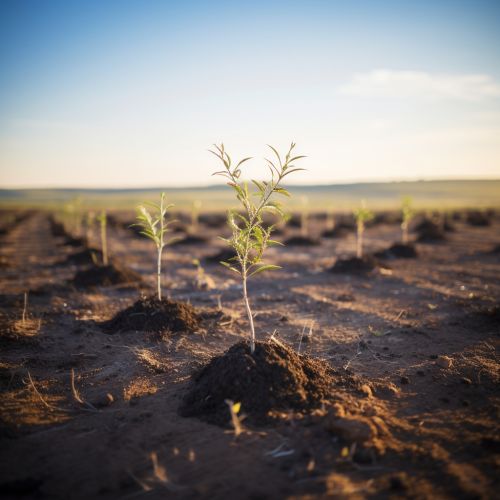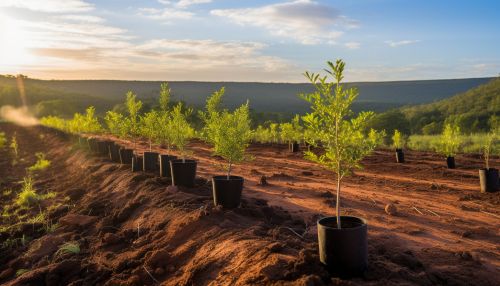Afforestation
Introduction
Afforestation is the process of establishing a forest, or stand of trees, in an area where there was no forest. This is often done in previously barren land, or in converted areas that have been logged and cleared. Afforestation is a specific form of forestry that involves the conversion of barren or agricultural land into forests. It is different from reforestation, which involves replanting forests that have been cut or lost due to fire, disease, or logging.


History
The concept of afforestation has been around for centuries. In ancient civilizations, such as the Roman Empire, trees were planted to provide timber for building and fuel. In the Middle Ages, afforestation was used to create hunting forests and game reserves. However, the modern practice of afforestation, with its focus on environmental sustainability and climate change mitigation, began in the 19th century.
Methods
There are several methods of afforestation, each with its own advantages and disadvantages. The most common methods include seed planting, direct seeding, and tree planting. In seed planting, seeds are sown directly into the soil. This method is simple and cost-effective, but it is also slow and has a high failure rate due to predation or harsh weather conditions. Direct seeding involves the use of seed balls or seedlings, which are planted directly into the ground. This method is faster and has a higher success rate, but it is also more expensive. Tree planting involves the planting of young trees or saplings. This is the most effective method, but it is also the most labor-intensive and costly.
Benefits
Afforestation has numerous benefits, both environmental and socio-economic. From an environmental perspective, afforestation helps to combat climate change by absorbing carbon dioxide, a major greenhouse gas, from the atmosphere. It also helps to conserve biodiversity by creating new habitats for various species of plants and animals. From a socio-economic perspective, afforestation can provide jobs and income for local communities, especially in rural areas. It can also provide timber and non-timber forest products, such as fruits, nuts, and medicinal plants.
Challenges
Despite its benefits, afforestation also faces several challenges. One of the main challenges is the lack of suitable land. In many parts of the world, most of the land is already used for agriculture or urban development. Another challenge is the high cost of tree planting and maintenance. Afforestation projects often require significant financial resources, which can be a barrier for developing countries. There are also ecological challenges, such as the risk of introducing non-native species or disrupting local ecosystems.
Case Studies
There are many examples of successful afforestation projects around the world. One of the most well-known is the Great Green Wall initiative in Africa, which aims to combat desertification and improve livelihoods by planting a belt of trees across the continent. Another example is the afforestation efforts in China, which have resulted in the largest increase in forest cover worldwide over the past few decades.
Future Prospects
The future of afforestation looks promising, with increasing recognition of its role in climate change mitigation and sustainable development. However, there is a need for more research and innovation to overcome the challenges and maximize the benefits of afforestation. This includes the development of more efficient and cost-effective tree planting methods, as well as the integration of afforestation with other land use practices, such as agroforestry and sustainable agriculture.
